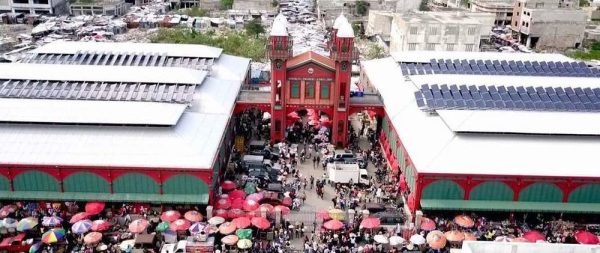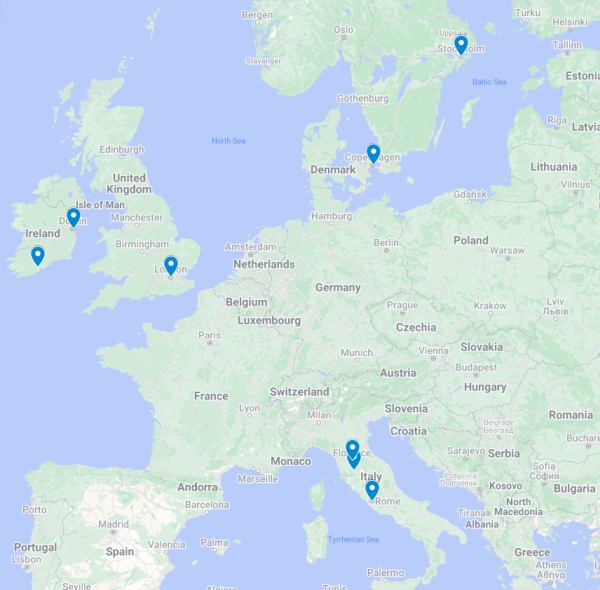Imbalanced power structures overseas lead to protests
Nigerian protestors were attacked last week by a group of men armed with firearms and machetes during a protest to end police violence in Lagos, according to The Associated Press.
“They were shooting and attacking people with machetes — I saw them injure someone,” Tola Afolabi, a protestor, said in an interview with The AP.
On Oct. 15 — the eighth day of protests — the AP reported that 10 protestors had been killed and hundreds injured in Lagos alone. The spokesman for the People’s Democratic Party, Kola Ologbondiyan, as well as other demonstrators suspect that the armed individuals were hired by the police in order to break up the protests, though there is no evidence to support this.
The primary goal of the demonstrations is to abolish the police group known as the Special Anti-Robbery Squad. Although referred to as SARS, the group has no relation to the pandemic or severe acute respiratory syndrome. The group is accused of committing widespread abuse by various human rights organizations, according to the AP.
ForeignPolicy.com reported that a large proportion of the deaths are related to breaking a curfew put in place as part of Nigeria’s efforts to slow the spread of COVID-19. By March 30, two weeks after Nigeria’s nationwide lockdown, 18 people had been killed by law enforcement, with the number continuing to rise.
The New York Times described scenes in Johannesburg, South Africa that were similar to those seen in the U.S. over the summer: clouds of tear gas wafting overhead, protestors facing a line of police wielding riot shields, shrines for those killed covered in flowers and stuffed animals, and signs with slogans such as “Say His Name” and “Coloured Lives Matter.”
The Times specified that while in a majority of countries, describing a person of color as “coloured” is offensive, it still sees use in South Africa as a remnant from the apartheid.
According to History.com, the apartheid — meaning “apartness” in Afrikaans, the language of the area — was a period that began when the National Party took power in 1948 that brought about extreme segregation considered equal to, or even worse than, the civil rights era United States. Repeals to the racist legislation began in 1991 when F.W. de Klerk took the office of President, but echoes of the apartheid still remain today.
South African people of color are more susceptible to distrust of police forces, as the police were a main accessory of the apartheid, the Times reported.
In late August, 16-year-old Nathaniel Julies, who suffered from Down syndrome and was a prominent community member, was shot multiple times by police for breaking curfew, according to The Times.
“We couldn’t count,” his mother, Bridget Harris, said to the Times while describing the wounds. “It’s too many.”
Julies is one of many, as at least one South African dies by the hands of police every day, according to ViewFinder.
ViewFinder is an investigative journalism project headed by Daneel Knoetze which reports on abuses of power in South Africa.
“In a nutshell, we’ve got this flagship project on policing accountability (and) oversight issues,” Knoetze said. “What we’re hoping to do is bring investigative journalism methods and impact to issues that affect marginalized working class communities in South Africa and the systems and processes which perpetuate inequality.”
Knoetze explained that while much of the apartheid era segregationalist values have dissipated, some issues continue without a resolution.
“I think many state institutions are also geared towards re-marginalization of people in areas like housing, … health, education, where people live — access to services and opportunities,” Knoetze said.
These and other injustices have occurred in African countries longer than many across the world realize, but the protests that began in the U.S. over the summer sparked by the deaths of George Floyd, Breonna Taylor and other people of color highlighted race issues around the globe, according to ForeignPolicy.com.
“In South Africa, before Black Lives Matter happened, there was already a refocus on the issue of police brutality,” Knoetze said. “One of the things that we — through a long term data-driven investigation — are trying to bring to view is that discourse and debate. Even though there’s a lot of public recognition of it … it establishes the fact of how many people are killed annually, how many torture and assault cases, how many people are raped by police officers on duty. Those statistics are remarkably assistant.”
Both Knoetze and protestors agreed that bringing attention to relevant issues on social media — or even just recording injustices occurring — has been an extremely useful tool over the past few months.
“(The attention) contributed to the protests which have received support globally, including from the U.S., where international rapper Kanye West and Black Lives Matter have shown interest,” said protestor Timi Olatunju in an interview with the AP.
Knoetze expressed that with such large scale issues spanning the entire world, it is important to recognize the commonality in the struggles all people endure.
“Even though the contexts were different … the timeline was off by a good 30 years … South Africa and the United States have — in terms of the issues of race, class, policing and abuse of working class communities — a lot of continuity between the two societies,” Knoetze said. “It’s really important that cross-Atlantic conversations between South African activists grappling with the history of racial segregation and policing and the impact there of, and in the U.S. These issues are not unconnected around the world.”

Roman Hladio is a senior from Wexford, Pennsylvania. He is studying English with a creative writing emphasis, and completing requirements for a Journalism...







